Managing a website has led many marketers to pull out their hair, mainly because they don’t have much control over the changes or don’t have the coding skills to make key updates. But HubSpot Content Hub has changed that.
Websites are something I’m super passionate about because a website isn’t just a place to tell people about your product or service – it’s your company’s first impression. Think of it this way, if you’re going to an industry event, you wouldn’t show up in your pj’s with your hair all over the place. Even now, with the world on video call, you’ve made sure that at least your top half is done up, right? Your website is the dressing for your business, and a poorly dressed website can leave just as bad an impression. Even worse, a website with a poor user experience (UX) will guarantee you lose business.
Over the course of my career, I’ve worked on many different CMS platforms, including Wix, Weebly, and WordPress. And while they all have their pros and cons, none of them give marketers as much power over their websites as HubSpot Content Hub. As someone who’s managed the Spitfire website over the years, I’ve spent time getting to know HubSpot Content Hub and truly believe it’s the best CMS for marketers.
As HubSpot says, “Developers build using flexible themes and content structures. Marketers easily edit and create pages on their own. Customers get a personalised, secure experience.” With Content Hub, everyone wins.
What is a CMS?
For those of you who need a little terminology lesson, CMS stands for Content Management System. In a nutshell, a CMS is a system which allows you to create, manage, and modify digital content, specifically your web content.
There are many types of CMS systems but over the years the drag and drop, template-based platforms, like WordPress and HubSpot, have become popular as they give marketers the opportunity to manage their online content. The problem comes in when things start to get technical.
Why marketers need a more manageable CMS
Traditional CMS systems may be designed with template options and drag and drop editors, but they still require a developer's touch to ensure security is maintained and technical elements are updated. Not to mention, most developers take the templates offered by the traditional CMS platform and customise it to match your needs or make your site look different, and if you need to make changes to those elements in the future (which is very likely; websites are never finished) you’ll need to rope in a developer for help.
This makes traditional CMS systems stressful for marketers. The world of marketing is fast-paced and ever-changing, and you want to be able to make updates to your website quickly and easily to move with the trends and stay relevant. It’s not unheard of for ideas to go out of style while waiting on the developers. It also adds additional costs, which affects your ability to show ROI.
The key features that make HubSpot Content Hub great for marketers
Much like all the HubSpot hubs, Content Hub has many amazing features which will appeal to everyone from the small business owner to the developers. But there are some key features that make it the ideal tool for marketers.
- Create and edit pages easily
As a website manager, you review your website performance every day and come up with recommendations on how to optimise your website for user experience and conversion. Making the recommendations is one thing, but making the changes to the website can be stressful. If you’re working on a complicated CMS, you’re probably terrified that you might break the website (and the only thing worse than a bad website, is no website)... Trust me, I’ve been there.
With Content Hub, making quick changes on a website page is easy – it’s as simple as rewriting text or replacing an image. If you need to add elements, the front end has an easy drag and drop.

Building a brand new page is even easier. When you create a website on HubSpot, you can use HubSpot themes, buy a third-party theme, or create your own theme (and if you’re moving a website onto HubSpot, they can duplicate your current theme for you). Once this is done, you have a bank of templates to choose from when designing a new page. Simply choose one and edit.
You also don’t need to worry about making mistakes. HubSpot has an easy-to-access history function that lets you revert to previous versions without having to contact your hosting company!
- Readily available themes
Much like you can do on other CMSes, Content Hub offers robust themes to choose from. What does this mean for marketers? Simply that if you need to update your look and feel or build a brand new website from scratch, you don’t need a developer. You can simply find a theme that works for your business and very easily edit it to fit your CI.
The cherry on top? These themes come as a “pack”, which means you don’t just get a simple header and footer design with some module styling – you get multiple page designs within the theme, which include things like blog designs, unsubscribe pages designs, key modules, and more. This offers even more control to marketers.

- A/B testing and SMART content
As a marketer, before I used HubSpot I would often get annoyed at the limitations on what a website could do. Creatives have big ideas and there’s nothing more frustrating than not being able to try them. With the easy-to-use features like A/B testing, we’re able to test out up to five different page variations to see which perform the best.
With SMART content, which is unique to HubSpot, we can hyper-personalise our content to talk to different personas or people at different stages of their buyer’s journey all on the same page. You can even speak directly to a contact you are trying to delight.
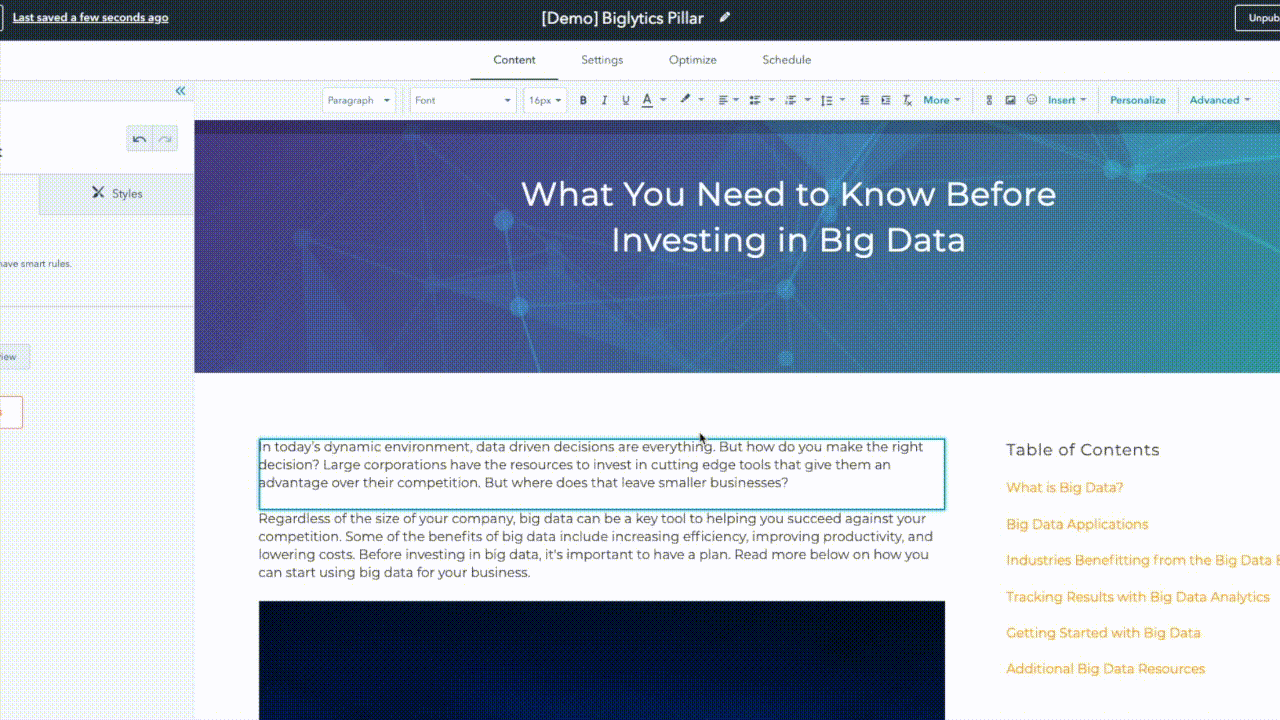
- Built in SEO
Everyone knows that the first port of call for anyone looking to solve a problem is the Google machine. So the term Search Engine Optimisation (SEO) is not new to marketers, but it’s something that gives many headaches. Everyone wants their website to be on the first page and having a robust strategy is step one, but implementation is step two.
With Content Hub, not only do you get a tool that offers an easy way to update page titles and meta descriptions, but you get the HubSpot SEO tool. A uniquely designed tool which will not only help boost your entire site SEO but offers recommendations, and shows you search volume on keywords and how easy it is to rank for that keyword... in your country. I guarantee there isn’t a plugin available that can do that!

Find out more about how to use the HubSpot SEO tool and topic clusters, read this blog.
- Bring your brand voice into every piece of content
Not everyone is a writer, sometimes you have to rely on others to write for you and even when a writer does know your brand it can be easy to end up sounding like every other brand out there. Content Hub has created something unique to inject your brand's personality into every piece of content you create - Brand Voice
Ultimately this tool allows you to bring your unique voice into every blog, generate social media captions easily, and AI-generated content that captures your brand's essence. And the best part? You only have to give HubSpot a small writing sample and then let the system do all the work.
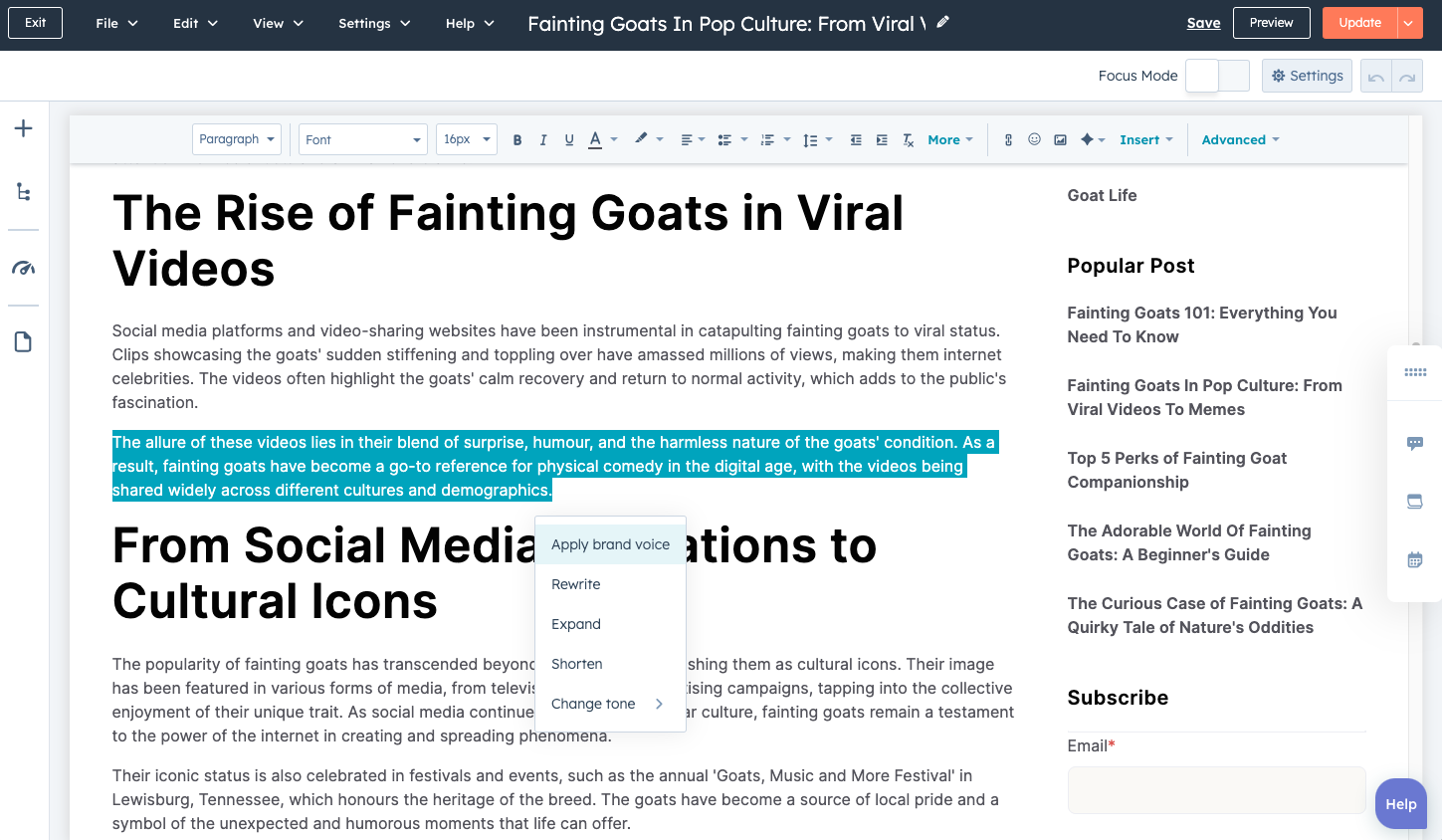
- Blog smarter with AI blog post generator
Content Hub’s AI Blog Post Generator is the next best tool to supercharge your content. With just a few details about your topic, this tool creates a customised outline that you can tweak to perfection. Once you're satisfied, the AI goes to work, crafting a complete blog post for you. While it's a fantastic time-saver, you should still always read through the content and edit where necessary so that it aligns with your brand and has a human touch.
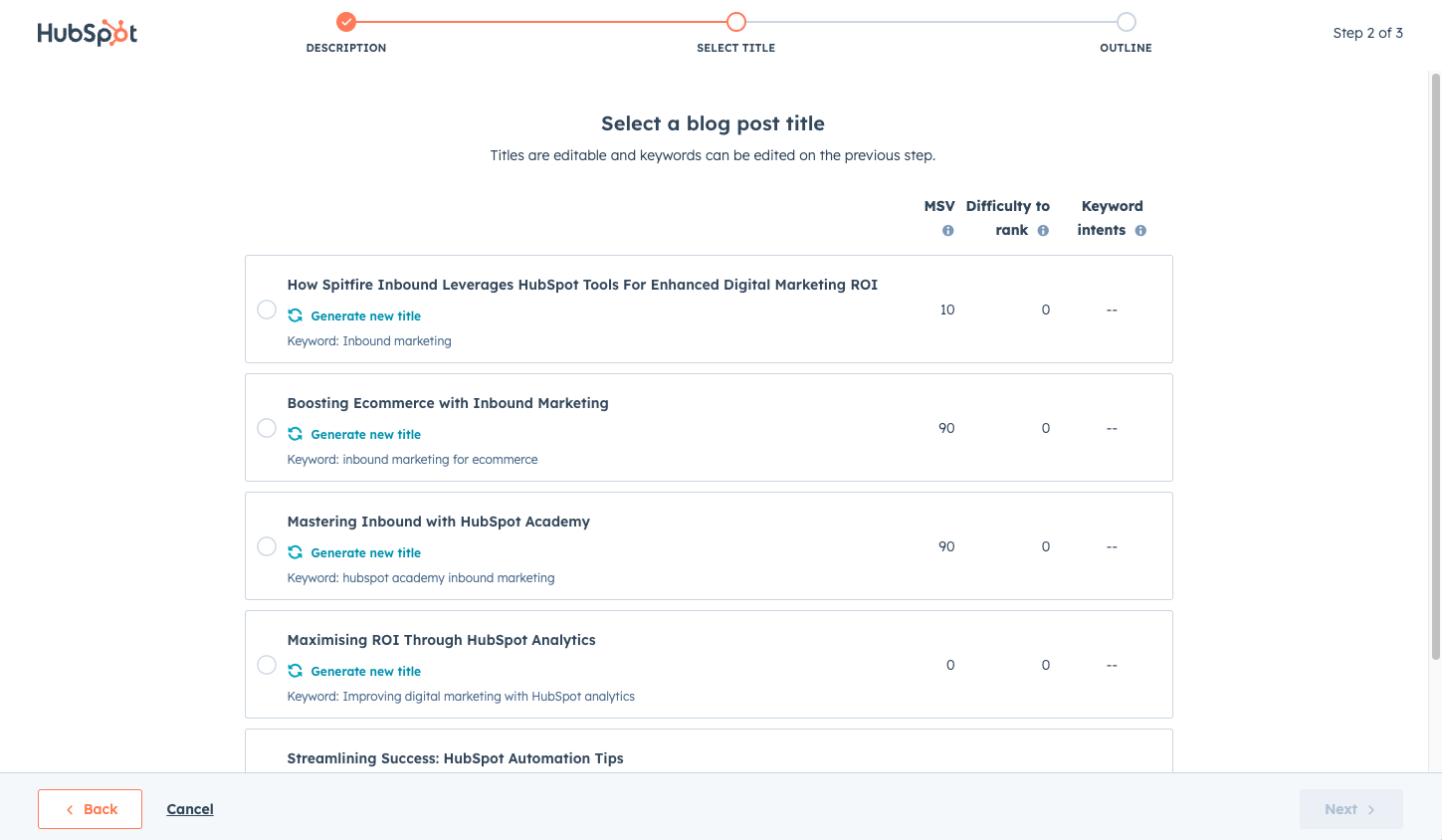
- Looking for a Content Remix?
Content Remix helps you maximise your content's potential. You can repurpose your best assets into fresh, engaging content for various channels, like turning a blog post into social media posts, a video script, or an email campaign. With this AI-driven tool, you can overcome content creation bottlenecks and explore new opportunities for growth. Content Remix offers a flexible and creative way to breathe new life into your existing content.
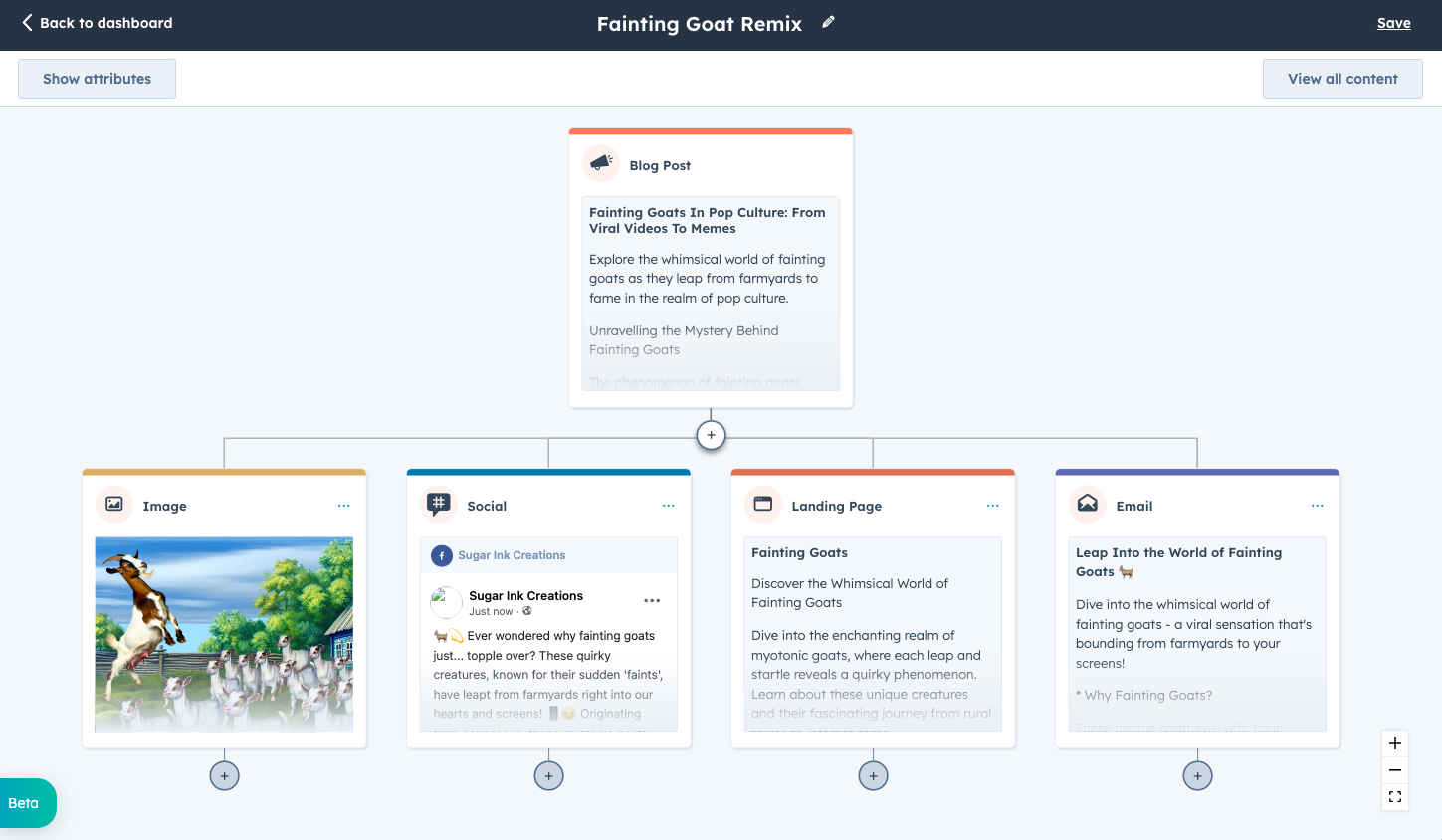
- Manage and report on multiple websites
If you’re a big business that has several microsites that need to be maintained, Content Hub will make your life even better. Rather than having to manage several sites over several CMS accounts, you can manage them all on one platform… and report across them all!
- You only have to go to one place for support
I know every platform offers support, but often what you don’t know is that the support is limited to the platform basics.
Because everything is part of the HubSpot ecosystem, all support is handled by them, and they have several options for support. Which you can easily access right from your HubSpot portal, so no searching for help:
-
- For the really urgent issues – 24/7 phone support
- For the quick questions – a live chat is available within US office hours
- For the not so urgent issues – you can email your issue, they usually respond within a day.
- And if you’re keen to solve the problem yourself – there’s a knowledge base and community.
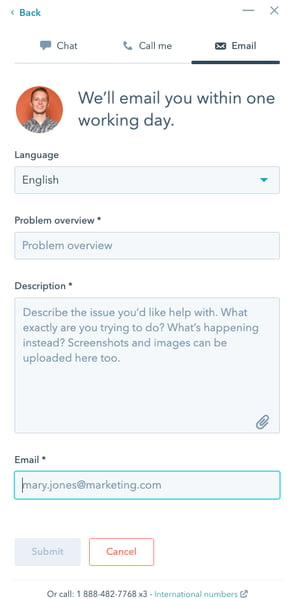
- Pain-free security
According to HubSpot, every day over 30 000 websites are hacked, and that’s terrifying. If you’re using a traditional CMS you might not even know about the cracks in your security, but hackers can exploit any weakness, and even an out-of-date plugin puts your website at risk. While updating plugins isn’t rocket science, it’s time-consuming and remembering to do it regularly when you have looming deadlines means it’s not top of mind.
The HubSpot Content Hub team monitors your site 24/7 for any threats and provides you with key security features, including SSL certification and 99.99% uptime as part of the package. No extra cost. No effort needed from you.
- Robust reporting
At Spitfire, we’re a data-driven team and all updates we make to our own and client websites are based on the real-time data. With Content Hub the reporting is a marketers dream! Rather than going to several tools to pull reports, everything is on one tool. You can build custom reports and dashboards to help you monitor key metrics.
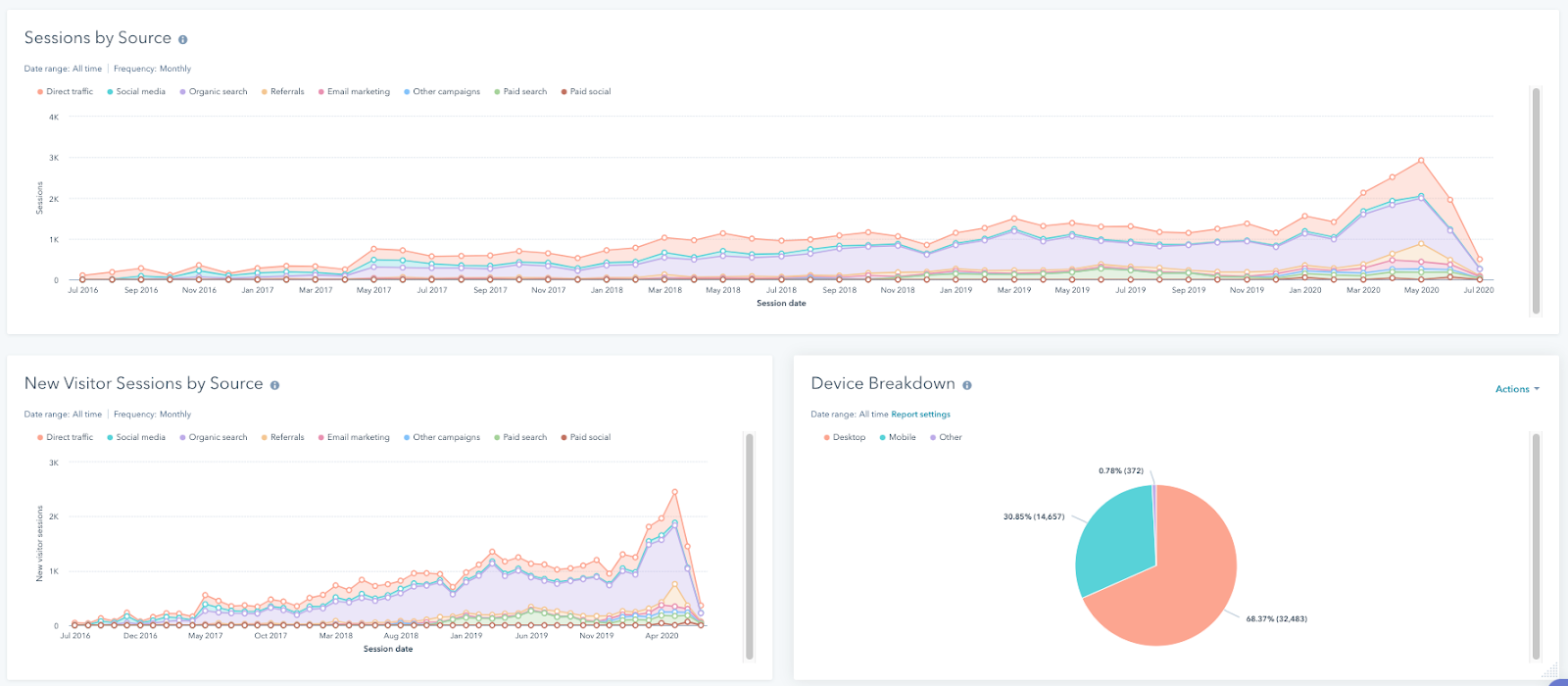
Setting goals is as easy as changing the reporting date range. All data is comparable and allows you to dig into how people are viewing your sites – down to the search engine used to find your site (you’d be amazed at how many people use Bing).
If you’re using the A/B testing we talked about earlier, you’re able to see a comparison on how each variation performed over the period, and if you want to make the winner your design going forward, it’s a simple click of a button!
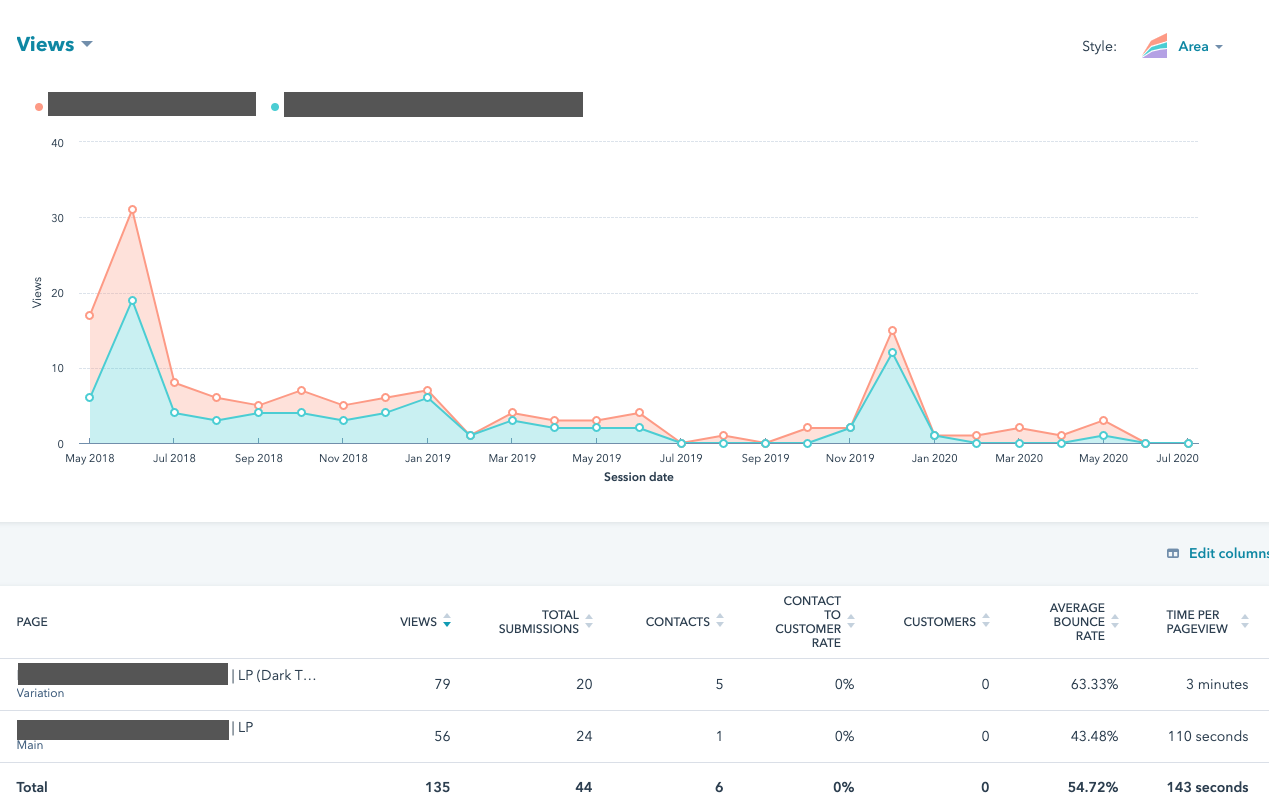
- You can do more with HubSpot!
Because HubSpot is not just a CMS platform, you get the benefit of other HubSpot features on top of the CMS. Imagine a CMS where you can not only build custom forms, and pop-up forms, but you can also send follow-up emails from those forms? And the forms are drag and drop too!
The tool also includes:
-
- The Ads ad-on where you can connect, manage, and report on all your Facebook, Instagram, LinkedIn, and Google ad campaigns.
- Emails and lists. You can send 2000 emails per month, create 25 static and five smart lists, and review basic reporting.
- The Live Chat, where you can add a chat onto your website and manage it directly from HubSpot.
- (and an added extra for the sales guys) The CRM with one sales pipeline and a tasking system, to track deals and store your contacts.
Essentially, when you use Content Hub, you’re not just getting a website building tool, you’re getting a tool that allows you to easily market to your website visitors, nurture leads, and reduce friction in your marketing processes.
Still need some more convincing? Take a look at the award-winning website we built for our client on the HubSpot Content Hub CMS using a growth-driven design (GDD). Read our case study for more.
Take the pain out of managing your website and move to HubSpot’s Content Hub. Contact us for a demo and get started with Content Hub today.









